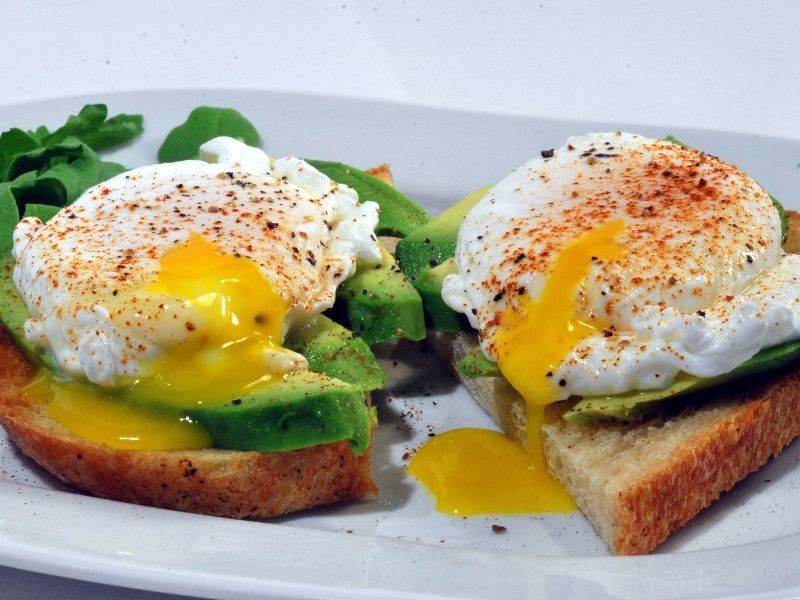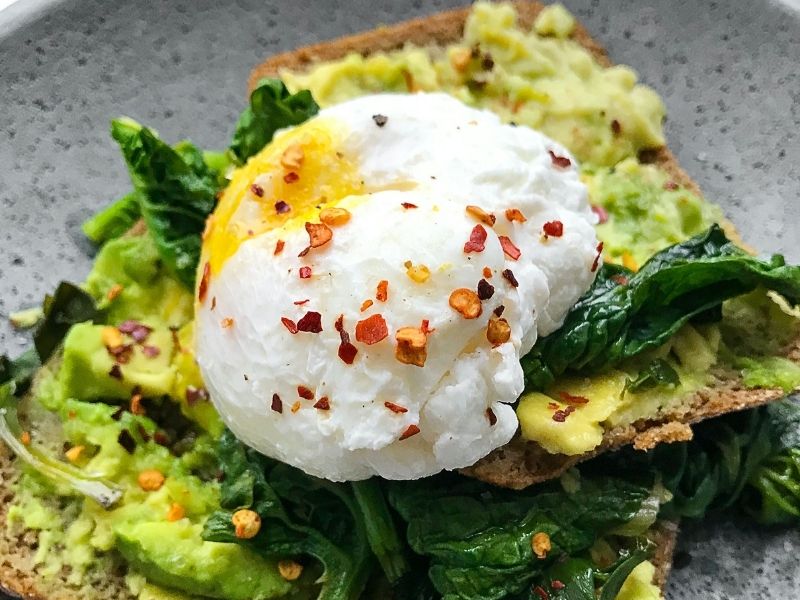For brunch-goers, they know the only (and best) way to have eggs is poached. There’s just something so rewarding about gingerly tearing apart the soft egg white case, exposing the gooey yolk as it drizzles down in slow motion. That said, making poached eggs can be a tricky and frustrating process. We want to help you, so here’s how to make poached eggs without tearing your hair out.
Before We Go On, Let’s First Understand How Poaching Works
Poaching is a culinary technique to cook something in low-to-medium temperatures, often between 70 and 80 celsius in a body of water seasoned with either salt or stock.
Compared to boiling and simmering, poaching is a gentler method that doesn’t agitate delicate ingredients like fish and eggs although it requires a longer cooking time. Chicken and vegetables can be poached too.
How To Make Poached Eggs In Five Easy Methods
The Whirlpool Method
Here’s how to make poached eggs for one or two pax. In a medium saucepan, season the water with white vinegar. The vinegar keeps the egg white compact, helping to minimise the risk of breaking during the cooking process.
Once the water reaches a gentle simmer, slowly stir it with a whisk to create a whirlpool for the eggs to move and cook in the saucepan. How do you know if the eggs are cooked? When they start to take on an oval, avocado-like shape.
To take out the eggs without damaging them, carefully scoop them out with a mesh colander to drain the excess water. Then, gently place the eggs on a paper towel to dry.
The Skillet Method
Got a weekend brunch spread planned for the family? Then, this is how to make poached eggs for everyone. Using a large enough skillet or pan, you can poach up to six eggs at a time. But timing is important here. Putting your eggs too quickly in between intervals causes them to mix together into a mess; too slowly and they become soft boil eggs.
The secret here is to slide one egg at a time into the water bath every 30 seconds. That way, you give each egg ample time and space to cook through before another joins the party.
Only remove an egg after it has been poached for three minutes, so make sure you have an alarm clock on standby to remind you.
The Deep Water Method
Similar to the skillet method, this works great if you’ve been thinking about how to make poached eggs for a small crowd. Get a pot and fill it with about four inches of water and bring it to a simmer.
This method creates photogenic teardrop-shaped poached eggs and it’s done by first cracking the raw eggs into small ramekins. Next, plop each egg into the water with the ramekin close to the water surface.
Watch as the heavy yolk sinks to the bottom with a trail of whites tapering to create a teardrop; quite a mesmerising sight to see! If your pot is shallow, the teardrop shape might not be as obvious. After about four minutes, the egg should be done.
The Strain Method
Unlike other methods, this strains the excess egg whites through a large colander before poaching. By doing that, your eggs will turn out tidy and perfectly oval without wispy trails of egg white that require trimming.
Nonetheless, careful not to overstrain the eggs so they don’t shrink in size during the cooking process. The last thing you want is to have an underwhelming poached egg to ruin your otherwise perfect brunch plans! To be on the safe side, you can opt to use a sieve instead of a colander.
The Microwave Method
Want poached eggs but don’t have the time to go through the process of making them? Well, here’s how you can make poached eggs without tedious manual work. Enter the microwave oven.
Now, we know what you’re thinking. How can microwaved poached eggs taste as good as the ones poached through conventional ways? Well, most likely not, but still pretty darn close. And all you need is just a mug, salt, and a working microwave oven. There are a few caveats to the mug, though. It must be thick enough with a reasonably sturdy handle so you can remove it from the oven without burning your hand.
Moreover, as all microwave ovens have different voltage levels, there isn’t a fixed poaching time for this method. But anywhere between two and three minutes is recommended. And yes, just like the aforementioned methods, it’s going to take trial and error to get the perfect poached egg. Thus, don’t sweat it if it turns out to be undercooked or overcooked the first few times.
Give Your Meals A Wholesome Upgrade By Learning How To Make Poached Eggs

Whether for breakfast, lunch, or dinner, a well-poached egg is a delicious addition to any meal. Plus, they’re also healthier than fried eggs. Furthermore, poached eggs are so aesthetically pleasing. Who can honestly resist the urge to not snap a picture of molten egg yolk spreading over a slice of sourdough bread? Certainly not us!
In need of recipes to top poached eggs with? These breakfast ideas are a good start.

